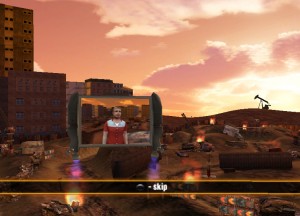Fear Factor Unleashed was a project for PC, Xbox and PS2 based on the Fear Factor tv show. The time scale for the project was very short and the company had no existing cross-platform tech so the decision was taken to use the Renderware middleware. At the time Renderware had a good reputation as it had been used in GTA 3 and Burnout. It soon became clear though that GTA 3 and Burnout must have had a lot of programmers working on the engine, because what was in the base Renderware was not very impressive at all. It’s no exaggeration to say we could have built our own PS2/Xbox/PC tech in the time taken working around Renderware problems or unimplemented features.



Regardless the game featured a mix of 3rd person platforming levels, vehicle based levels and special button press ‘eating’ levels to match the TV show. It certainly wasn’t a triple A game, but was certainly competitive with other mid-range PS2 titles from around that time. The game was never released as the publisher went bankrupt and although a few other publishers were interested nothing came of it.



There was some nice graphics tech in the game, such as heat hazes, render to texture effects, projected lights, reflective water on Xbox/PC and blur/disorient post-fx for when your ‘fear meter’ got too high! I was the lead on the Xbox platform, but as it was only a small team (5 programmers total, later 4) I done a lot of work on PS2 and PC as well. In particular I remember working on character collision detection – using a swept ellipsoid representing the character against the landscape triangle mesh. Swept means you are colliding over time as well as 3d space – so you find out what position in the timestep a potential collision would occur. There is a neat trick to swept ellipsoid detection – imagine transforming the world triangles by the inverse of the ellipsoid – so that if the ellipsoid was a perfect sphere the world is now ‘squashed’. Then transform the triangles around the direction you are sweeping in (imagine looking down the movement direction defined and seeing the triangles in front you – essentially a barycentric space). So now your ellipsoid is just really a 2d sphere looking at oncoming triangles – simply solve triangle versus sphere for every triangle and you have all your collision points! (Testing vertex to be inside or outside of sphere, then line versus circle for each edge of the triangle). The ‘depth’ in this space essentially gives the ‘time’ of collision, and you can just transform the results back to world space position & time step proportion when done.
















Recent Comments